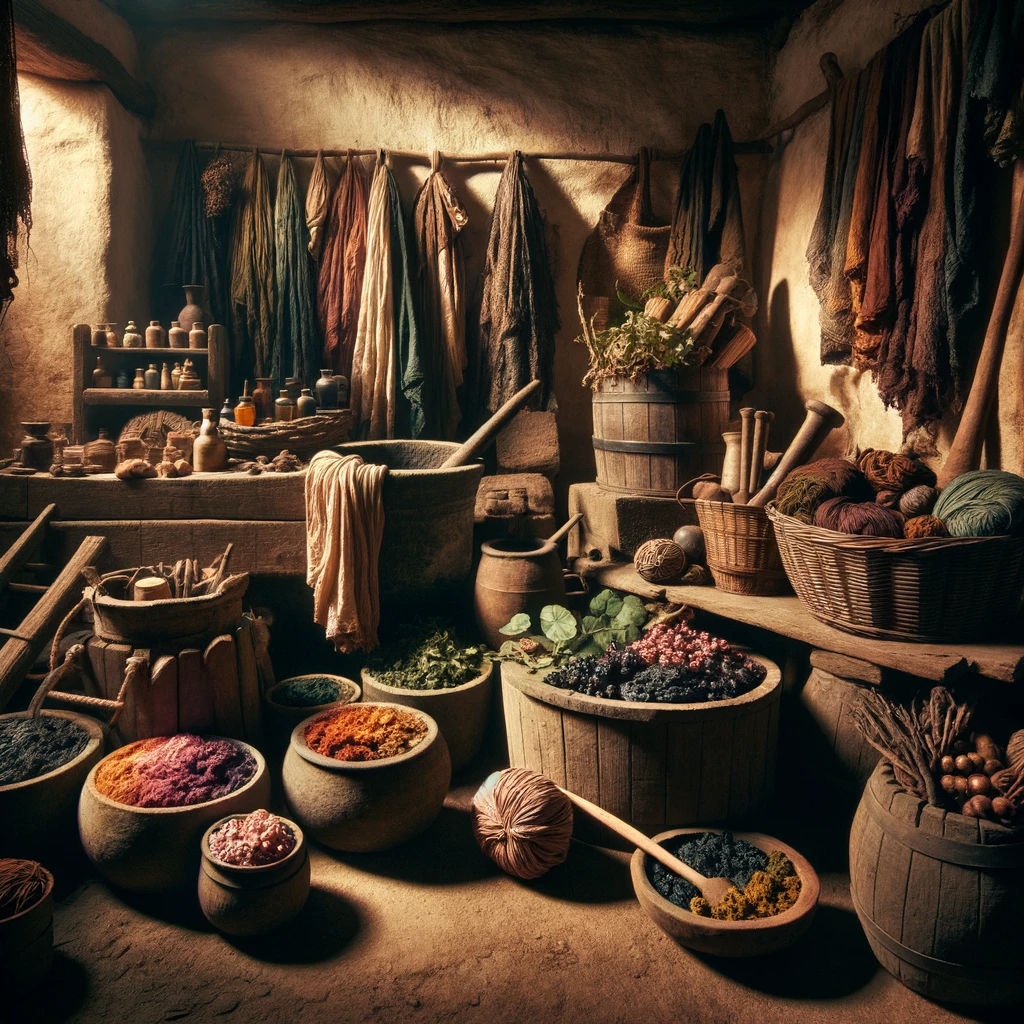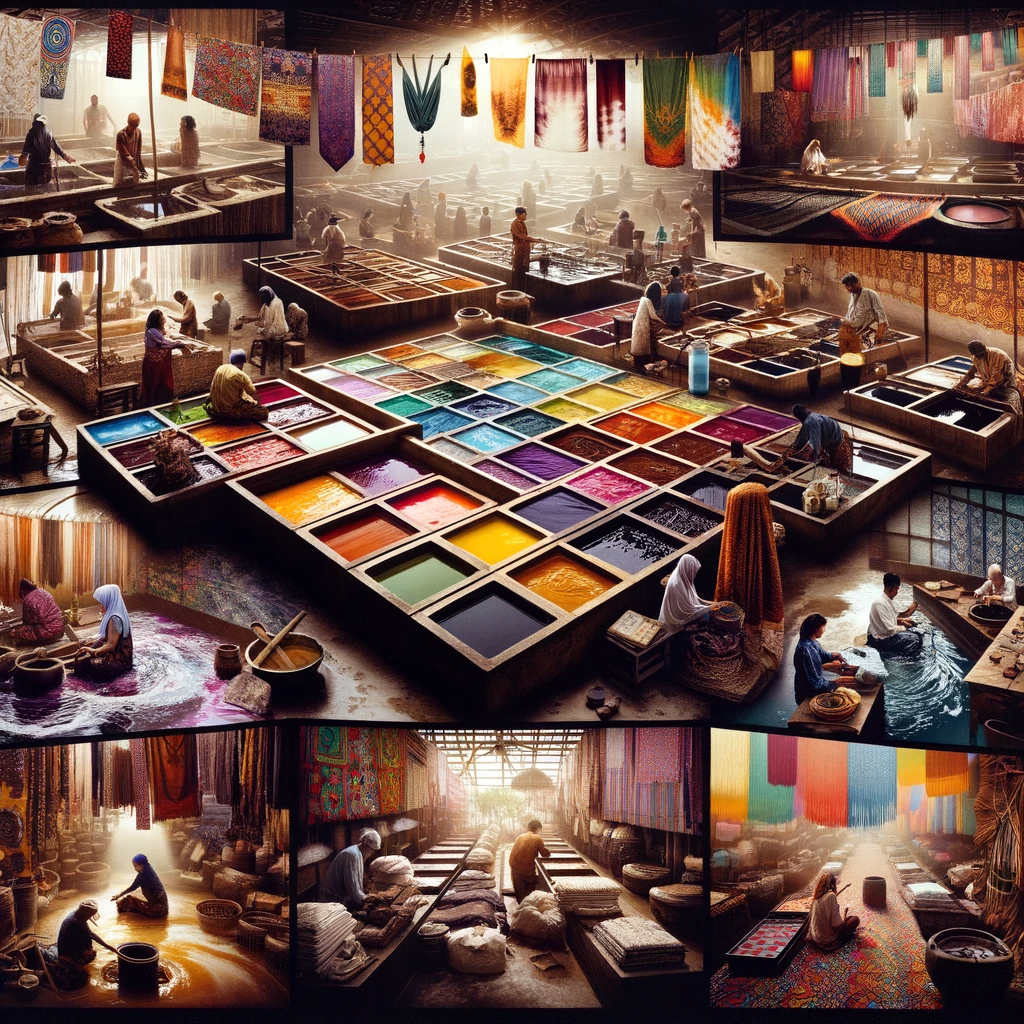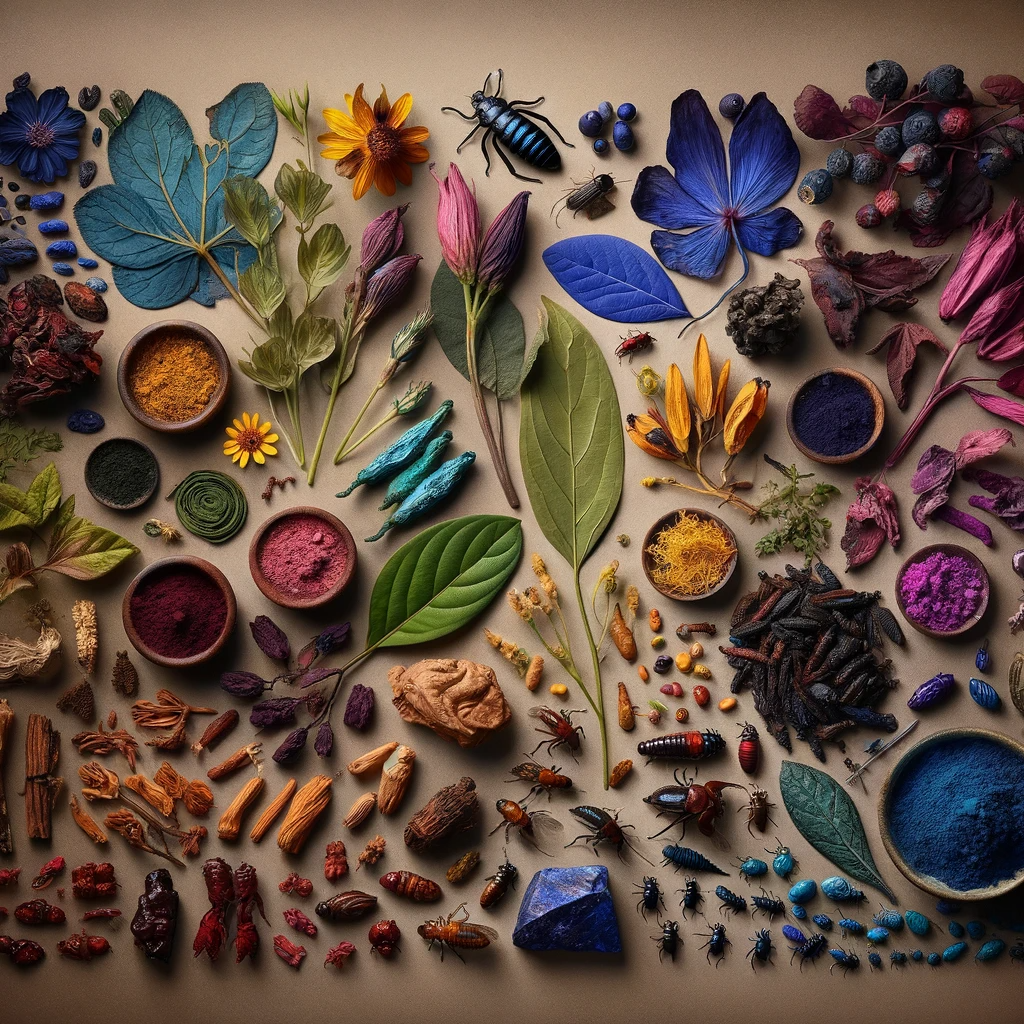Introduction
Today, we're diving into a world where nature meets creativity – the fascinating realm of natural, traditional, and DIY dyes. This journey taps into our shared love for the outdoors, our respect for tradition, and our passion for sustainable practices. So, grab a hot cup of joe, and let's explore the colorful tapestry of natural dyeing from around the globe!
The Roots of Natural Dyeing

Historical Overview
Long before synthetic dyes came into the picture, our ancestors were masters of color, extracting vibrant hues from nature. From the banks of the Nile to the valleys of the Indus, natural dyeing was not just about color – it was about connection, with both nature and culture.
Cultural Significance
In every part of the world, colors carry deep meanings. In Japan, indigo signifies resilience, while in India, it’s a color of tranquility. These colors are more than just aesthetics; they're stories, beliefs, and a way of life.
Traditional Dyeing Techniques Around the World

Asia
In India and Japan, indigo dyeing is not just a process – it's a legacy. China’s silk dyeing is another marvel, showcasing how traditional methods can create stunning beauty. Indigo dye, derived from the Indigofera plant, has a rich history in Asia, particularly in India, which is believed to be the oldest center of indigo dyeing in the Old World. The dye was a primary supplier of indigo to Europe as early as the Greco-Roman era. In the Philippines, blue to indigo colors were obtained from Indigofera tinctoria.
Africa
Mali's mud cloth tells a tale of earth and artistry, while Morocco's vibrant dyes reflect a harmony of nature and craft. The African mud cloth, also known as Bogolanfini, is a traditional textile technique from West Africa. This involves using mud as a natural dye to create patterns on cloth, with each pattern and design holding specific cultural significance.
Americas
South America's cochineal dye is a tale of crimson reds drawn from tiny insects found on local prickly pear cacti. Their dried bodies and eggs release a blood-red dye used for coloring fibers like wool or wild cotton. Native American vegetable dyes are a testament to living in sync with the environment. In South America, cochineal insects, found on local prickly pear cacti, are used for dyeing.
Europe
Medieval Europe’s woad and madder dyes are a journey into the past, while Renaissance Italy’s luxury dyeing practices remind us of a time when color was worth its weight in gold. In the British Isles and Western Europe, a range of plant materials was used to create diverse dye colors. Woad (Isatis Tinctoria) was notably used by the Celts for body paint and possibly tattoo ink. Vikings created dyes from local plant materials and also traded for colors like woad, indigo, madder, and cochineal.
Natural Dyes and Their Sources

Plant-Based Dyes
From the petals of marigolds to the leaves of walnut trees, plants offer an astonishing palette. Each region has its unique flora, contributing to a diverse spectrum of natural colors.
Animal-Based Dyes
Historically, insects and mollusks provided rich colors, but today, we face the challenge of balancing tradition with ethical responsibility.
Mineral Dyes
Earth and minerals bring us a range of subtle yet profound colors, echoing the hues found in nature's vast landscapes.
DIY Dyeing Techniques

Basics of Home Deying
Ready to try your hand at dyeing? We've got you covered with a step-by-step guide that turns your kitchen into a mini dye studio. Remember, it's about the journey – experiment, and embrace the surprises along the way.
Creative Ideas and Applications
Natural dyes aren’t just for textiles. They're a medium for artistic expression, whether it’s in your wardrobe or as a piece of handcrafted art. Let your imagination run as wild as our rivers!
Sustainability and Ethical Considerations

Environmental Impact
Natural dyes are more than just a nod to tradition; they're a statement of sustainability. Unlike synthetic dyes, they tread lightly on our planet.
Cultural Respect and Appropriation
As we embrace traditional techniques, let’s do so with respect. Supporting local artisans and understanding the cultural significance of these practices is key to responsible use.
Conclusion
We've only scratched the surface of this vibrant world. Natural dyeing is a perfect blend of the past and present, a testament to human ingenuity and nature’s bounty. We encourage you to dive deeper, experiment with dyes, and most importantly, do it with respect for the traditions and the environment.
Stay wild, stay curious!
Further Resources
Want to explore more? Check out these resources for deeper dives into the world of natural dyes. And remember, keep it sustainable, keep it respectful, and keep exploring.
- Indigo Dyeing in Asia: Indigo dye, derived from the Indigofera plant, has a rich history in Asia, particularly in India, which is believed to be the oldest center of indigo dyeing in the Old World. The dye was a primary supplier of indigo to Europe as early as the Greco-Roman era. In the Philippines, blue to indigo colors were obtained from Indigofera tinctoria.
- Indigo in the Americas: In Central and South America, important blue dyes like Añil (Indigofera suffruticosa) and Natal indigo (Indigofera arrecta) were used.
- Woad in Europe: In Europe, particularly in temperate climates, indigo was obtained from woad (Isatis tinctoria), an indigenous plant that has been grown in Northern Europe for over 2,000 years.
- Purple Dyes in Medieval Europe: In medieval Europe, purple and similar colors were produced using a combination of woad or indigo and red dyes like madder, kermes, and cochineal.
- Choctaw and Navajo Dyeing Techniques: The Choctaw artists traditionally used maple to create lavender and purple dyes, while Navajo weavers create black dye from a mix of mineral yellow ochre and pitch from the piñon tree.
- African Mud Cloth (Bogolanfini): The African mud cloth, also known as Bogolanfini, is a traditional textile technique from West Africa. This involves using mud as a natural dye to create patterns on cloth, with each pattern and design holding specific cultural significance.
- Cochineal Dyeing in South America: In South America, cochineal insects, found on local prickly pear cacti, are used for dyeing. Their dried bodies and eggs release a blood-red dye used for coloring fibers like wool or wild cotton.
- Dyeing Techniques in British Isles and Western Europe: In the British Isles and Western Europe, a range of plant materials was used to create diverse dye colors. Woad (Isatis Tinctoria) was notably used by the Celts for body paint and possibly tattoo ink. Vikings created dyes from local plant materials and also traded for colors like woad, indigo, madder, and cochineal.
These sources provide a deeper insight into the rich history and cultural significance of traditional dyeing techniques from different parts of the world.

